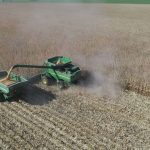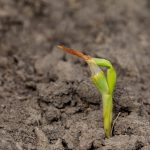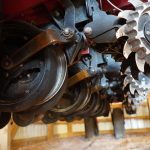Improving Seed to Soil Contact: A Guide for Farmers
While farming is the most high-tech it’s ever been, it’s still governed by the most basic principles of the natural world. When it comes to optimal seed germination, there are only two truly important factors at play – seed depth, and seed to soil contact.
Arguably the most important of these is seed to soil contact, since this is what allows a seed to access the moisture and warmth it needs to begin the germination process.
In this blog, we’re going to take a closer look at how seeds germinate, why proper contact with the soil is important, and how the latest tillage and planting technology is helping farmers to optimize germination, growth and yields in a highly competitive industry.
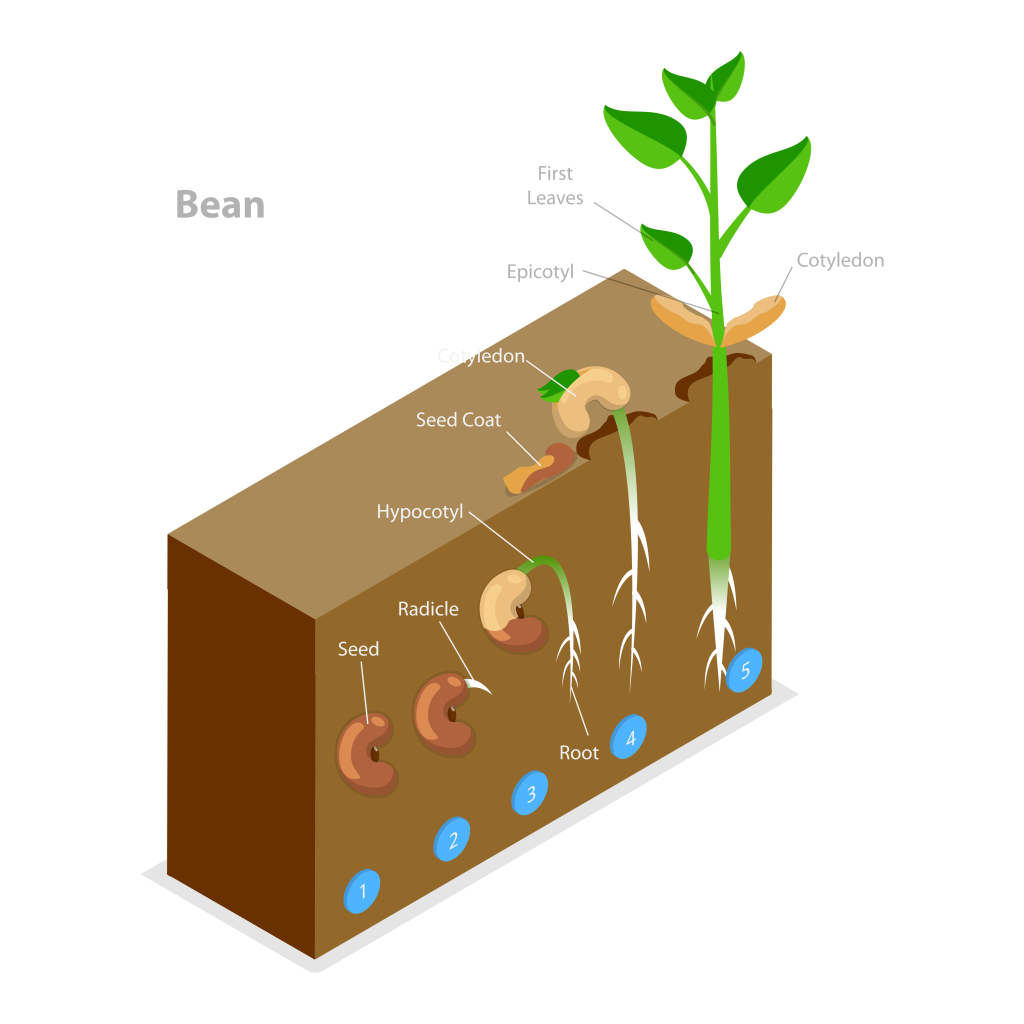
How does a seed germinate?
Seeds are amazing – they’re tiny powerhouses, packed with everything required to create and nourish the young plant. They contain the plant embryo, a food source (called the endosperm) and a protective outer seed coat (called the testa). The only things not contained within the seed itself are water, oxygen and heat – the seed must get all these from the soil.
Moisture is what triggers a seed to germinate. When it’s in contact with the soil, the seed absorbs water through its seed coat, causing it to swell up. The seed coat gets softer and may split open. This process activates enzymes that trigger the embryo to begin growing. As it grows, the embryo uses energy from its endosperm (a type of spongy tissue packed with carbohydrates, proteins and oils) as well as oxygen contained in the water in order to grow.
At this point, the embryonic plant bursts free of its seed coat, sending a tiny root called a radicle downwards into the soil, and a small shoot called a cotyledon up towards the surface, where a pair of tiny seed leaves will emerge – and the seed has successfully germinated. Only at this point do external factors – such as sunlight, rainfall and nutrients in the soil – begin to impact on the young plant’s growth.
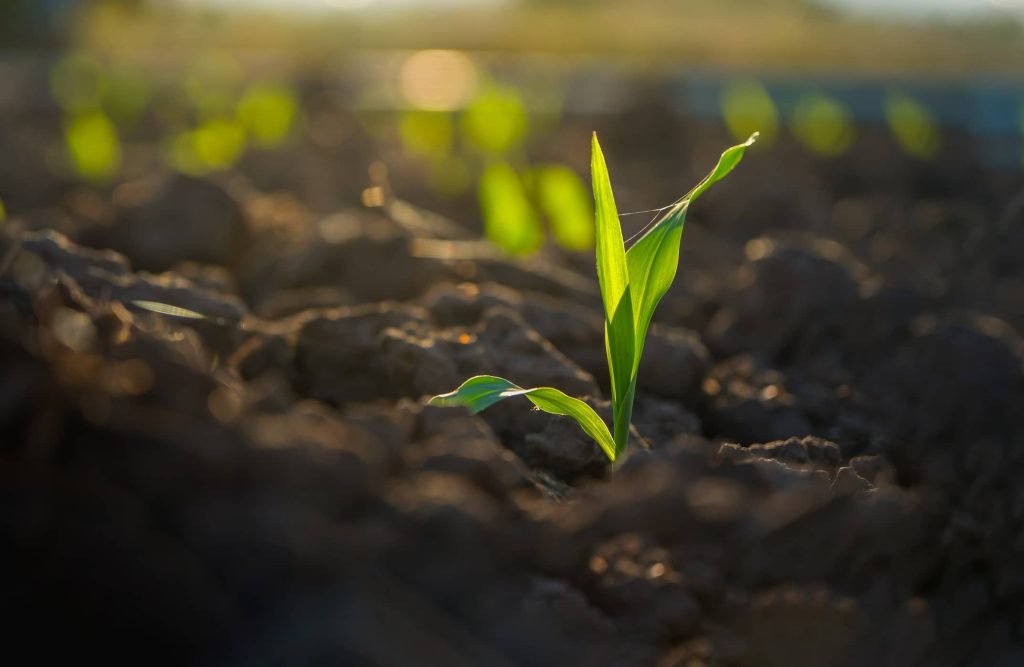
Why is seed to soil contact important?
Contact with the soil allows the seed to access water (containing oxygen) and also warmth that jump starts the germination process, but it also plays an important role in the continued growth of the seed.
Eliminating air pockets from the area immediately surrounding the seed at planting is one of the most important factors for successful germination, uniform stand emergence and the overall health of the plant. Here’s a look at what can happen if adequate seed to soil contact is not achieved:
1. The seed can’t absorb enough moisture to germinate
Without consistent soil contact, the seed may take longer to germinate, or may not germinate at all. Seeds that germinate significantly later than their neighbors are likely to be out-competed for light, water and nutrients and will be more prone to disease. They will also reach maturity later, resulting in losses at harvest.
2. Air spaces can fill with water
Seeds must be moist in order to germinate, but they don’t like to be waterlogged. A seed sitting in a pool of water will struggle to access warmth in the soil and is at high risk of rotting before it can germinate. Excess water around the seed also pushes oxygen out of the soil that the emerging roots need to thrive, resulting in slow or weak growth.
3. Mold or fungus can form around the seed
Fungal pathogens in soil thrive in dark, damp and moist conditions and will feed off tender or weak plant material, so it’s vital that emerging seedlings get off to a strong start. Eliminating air pockets around the seed reduces the risk of fungal growth that can attack the seed itself or the emerging seedling.
Good soil contact promotes strong growth that reduces vulnerability to ‘damping off’ disease – symptoms include thin, mushy stems that wilt or collapse soon after emergence from the soil. As these plants wither and die, they create space for weeds to take hold.
4. Seedlings can struggle to access nutrients
Even with poor seed to soil contact, some seedlings will manage to emerge and start growing – but often later and more weakly then their counterparts. As well as causing issues around stand uniformity and yields, these weaker plants are much more vulnerable to pests and disease that can then spread to the rest of the healthy crop.
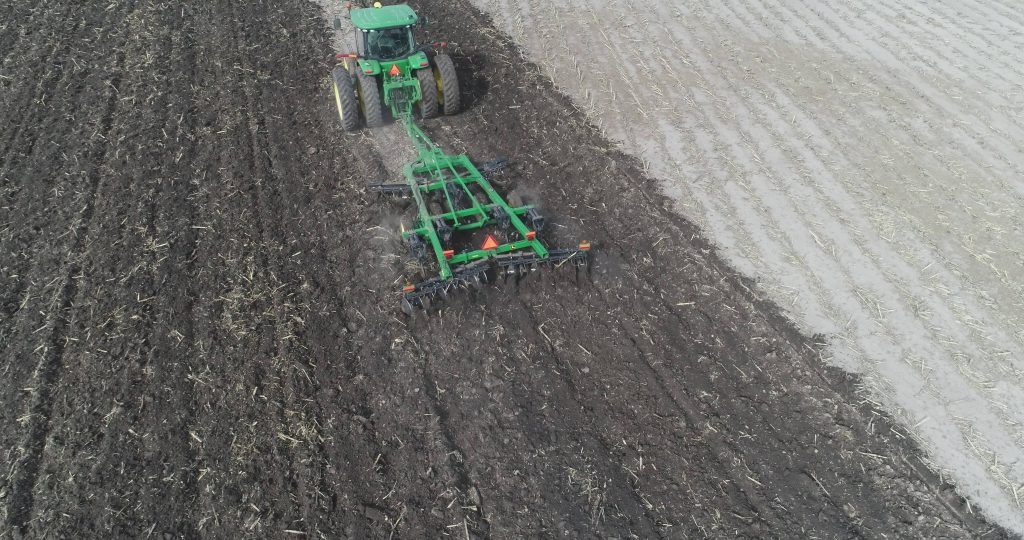
How do tillage tools promote seed to soil contact?
Tillage plays an important role in ensuring good seed to soil contact by creating a firm, well-aerated, and moist but well-drained seedbed, reducing the risk of air pockets, waterlogging and promoting uniform germination. Here are some of the ways tillage helps seeds get off to a great start:
- Breaks up clods and compacted soil, creating a fine tilth that settles readily around the seed
- Promotes better soil aeration and drainage so seeds have access to optimal oxygen and moisture levels throughout the germination and early growth stages
- Incorporates and chops crop residue, adding nutrients to the soil but also preventing issues like hairpinning that can inhibit seed to soil contact
- Reduces soil compaction so emerging roots can penetrate more deeply into the soil
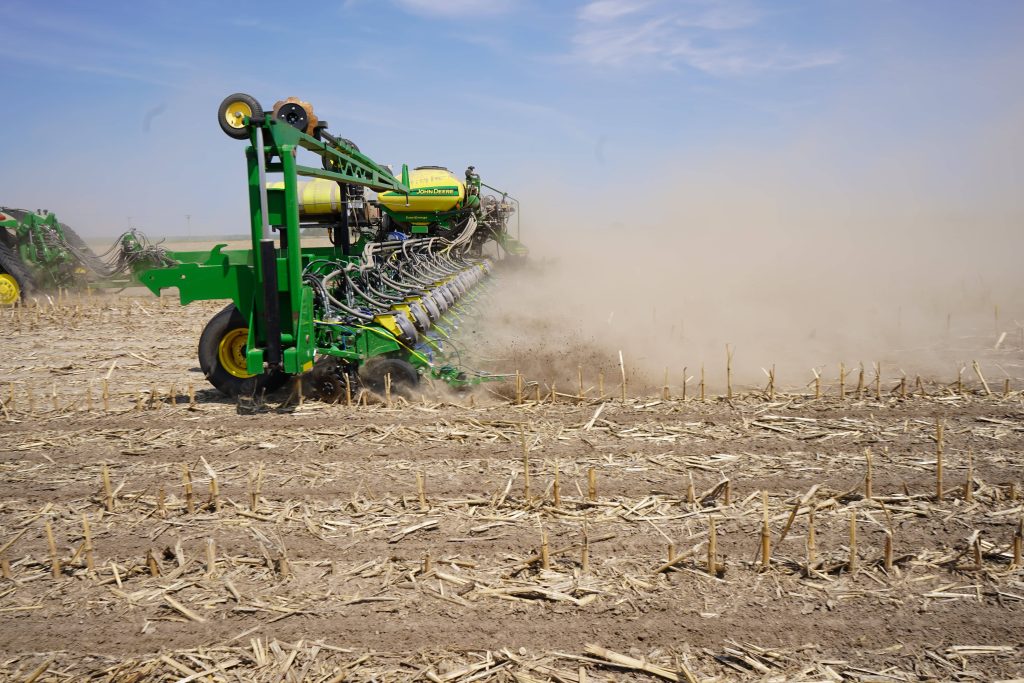
How do planting tools promote seed to soil contact?
Whether you’re running no-till, strip-till or a more conventional tillage system, the work doesn’t end there – the quality of your planting tools will also directly influence how successfully your seeds germinate. Here’s a look at the ways specific planting tools promote good seed to soil contact:
Seed Openers
Seed openers are responsible for opening a clean, v-shaped furrow that allows the seed to drop in at the optimal depth.
They need to slice through any surface residue as they open the furrow, so they must be sharp – if not, there’s a risk they will push stalks down into the furrow instead of cutting, which is known as hairpinning. Having residue pushed into the furrow like this can prevent seed to soil contact and create air pockets where mold and fungus can thrive.
If your seed openers are excessively worn, or if they don’t run true, you won’t get an optimal furrow – the profile might be w-shaped, and the walls may be unstable and prone to collapsing. This increases the risk of air pockets forming around the seed when the furrow is closed.
To avoid problems, look for seed openers that stay sharp, and ensure they run true with no wobble or lope that can contribute to a variable pinch point. With the Wearparts Guaranteed True™️ promise, you can save many hours pre-qualifying blades and get straight into the field with openers built for extended wear life and precision planting performance.
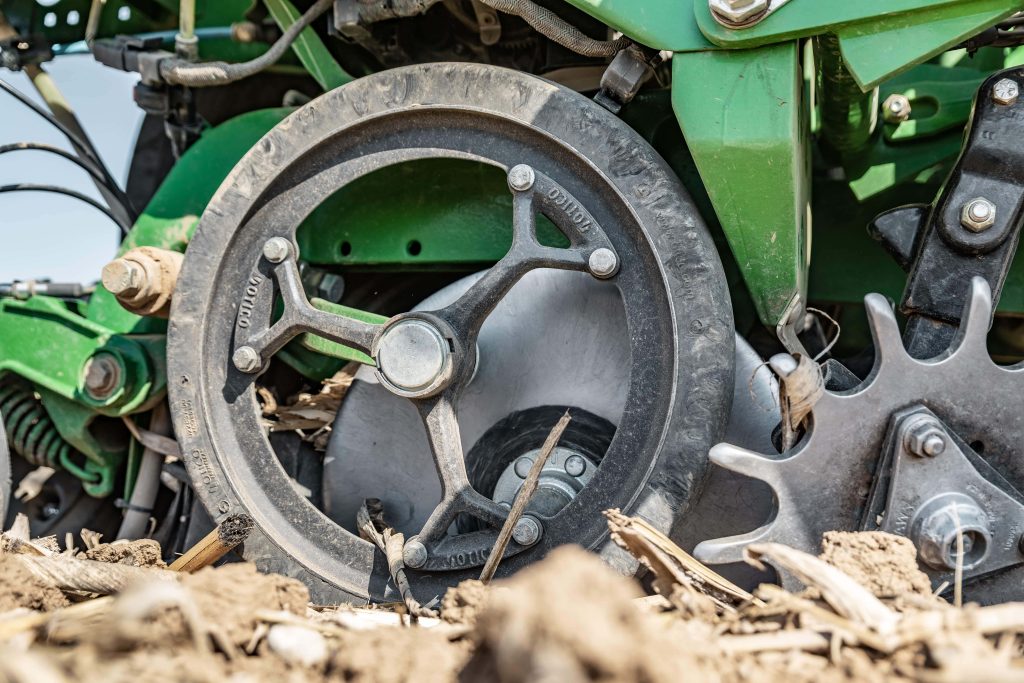
Gauge Wheels
Although primarily concerned with seed depth, gauge wheels can also influence seed to soil contact. Gauge wheels play an important role in keeping the furrow clean and free from trash – consider a solid versus a spoked wheel if you’re worried about trash or loose soil falling into the furrow and creating unwanted air pockets. Using tires with a reduced inner diameter can also help with creating a more stable sidewall while avoiding compaction that can hinder growth as the young plants emerge.
Closing Wheels
Closing and press wheels are responsible for closing the furrow after the seed has been dropped in, and firming the soil to optimize seed to soil contact. Different types of closing wheel are suitable for different types of soil – smooth and rubber wheels work well in dry or sandy conditions where a toothed closing wheel can be better in heavier soils, crumbling the sidewall as it goes to prevent lumps and air pockets.
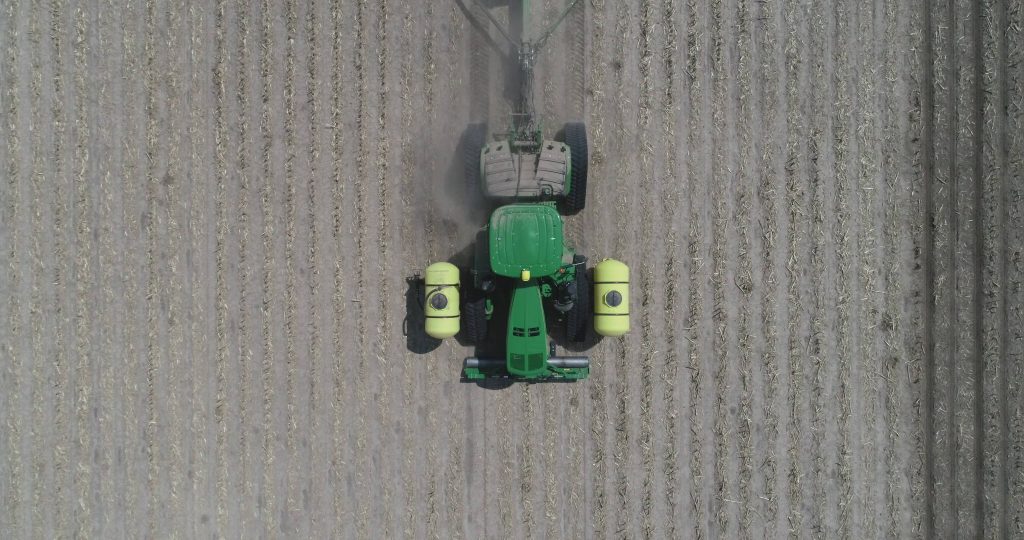
Need help choosing tillage or planting components?
Giving your seeds the best possible start is critical for efficient agronomics and optimal yields at harvest. Wearparts offers a wide range of tillage and planting tools suitable for all cropping systems and soil types, with superb compatibility across OEM machinery brands and a host of extra features to help farmers work smarter. Contact your Wearparts rep today for more information or to discuss a specific planting challenge!
